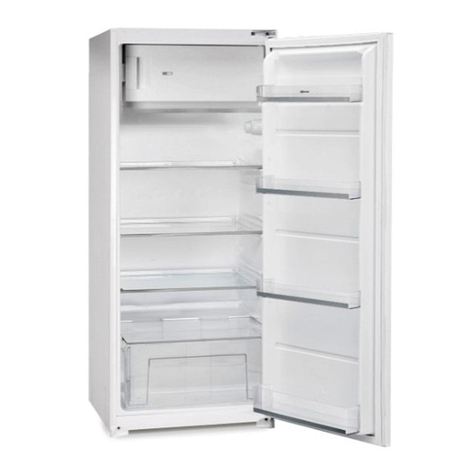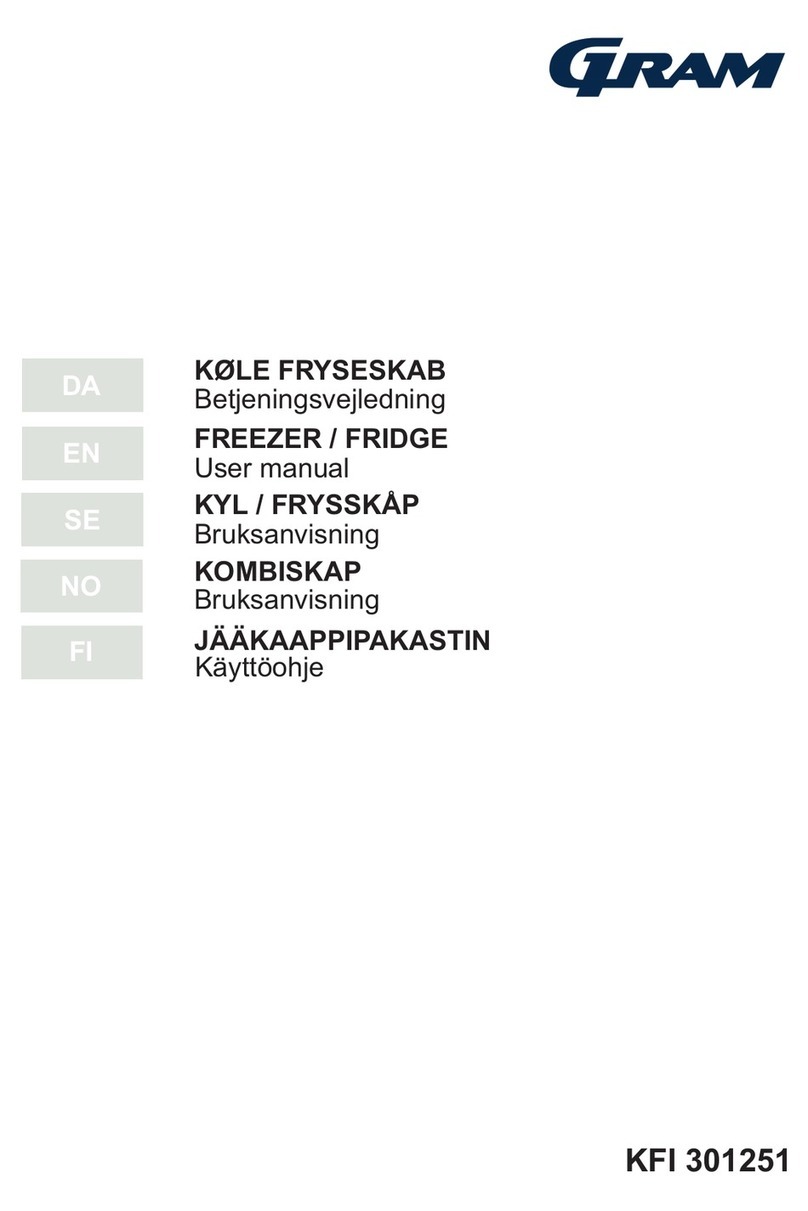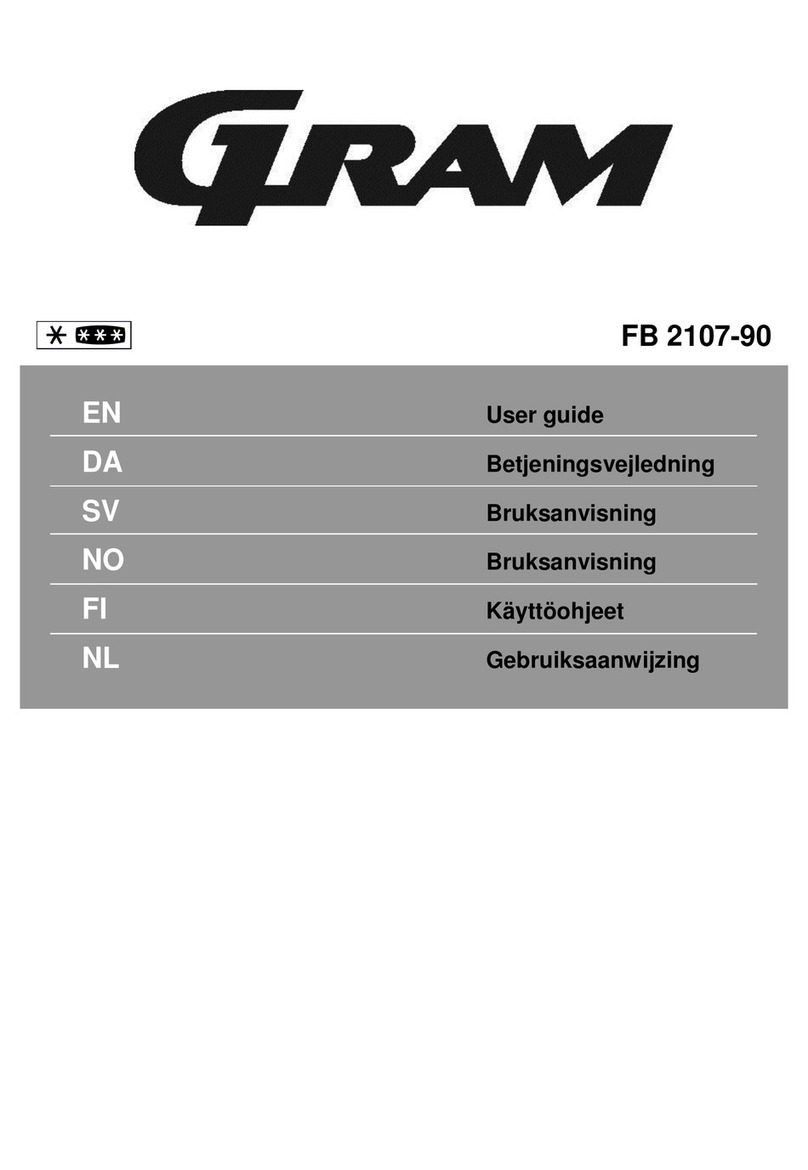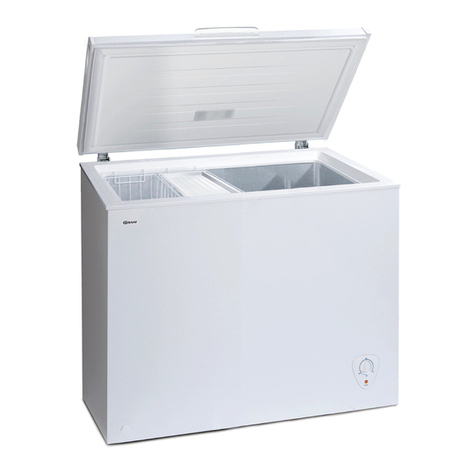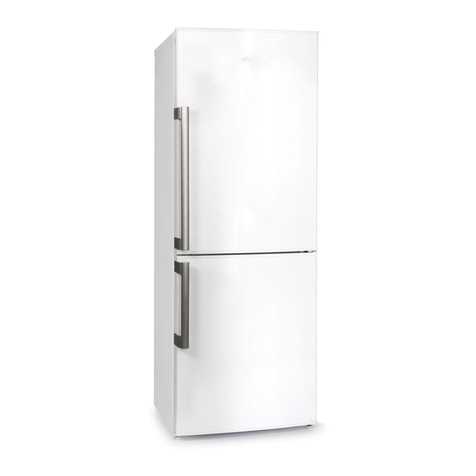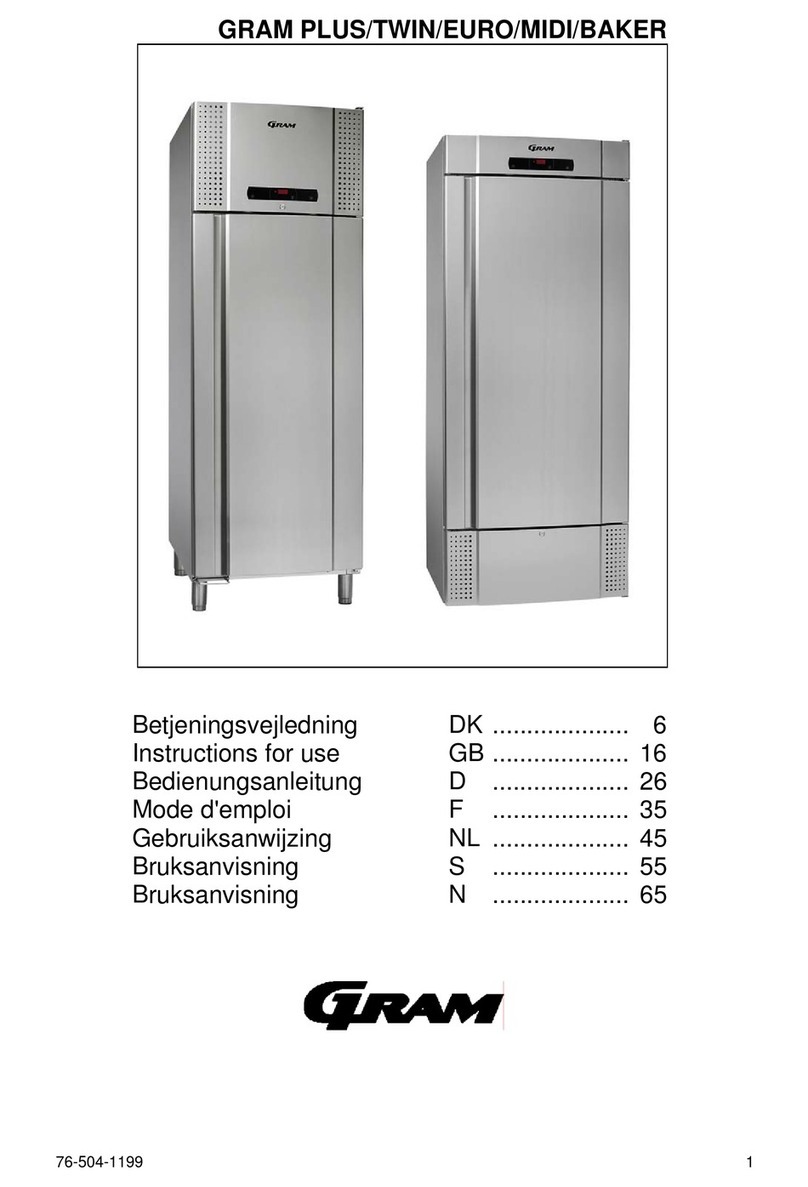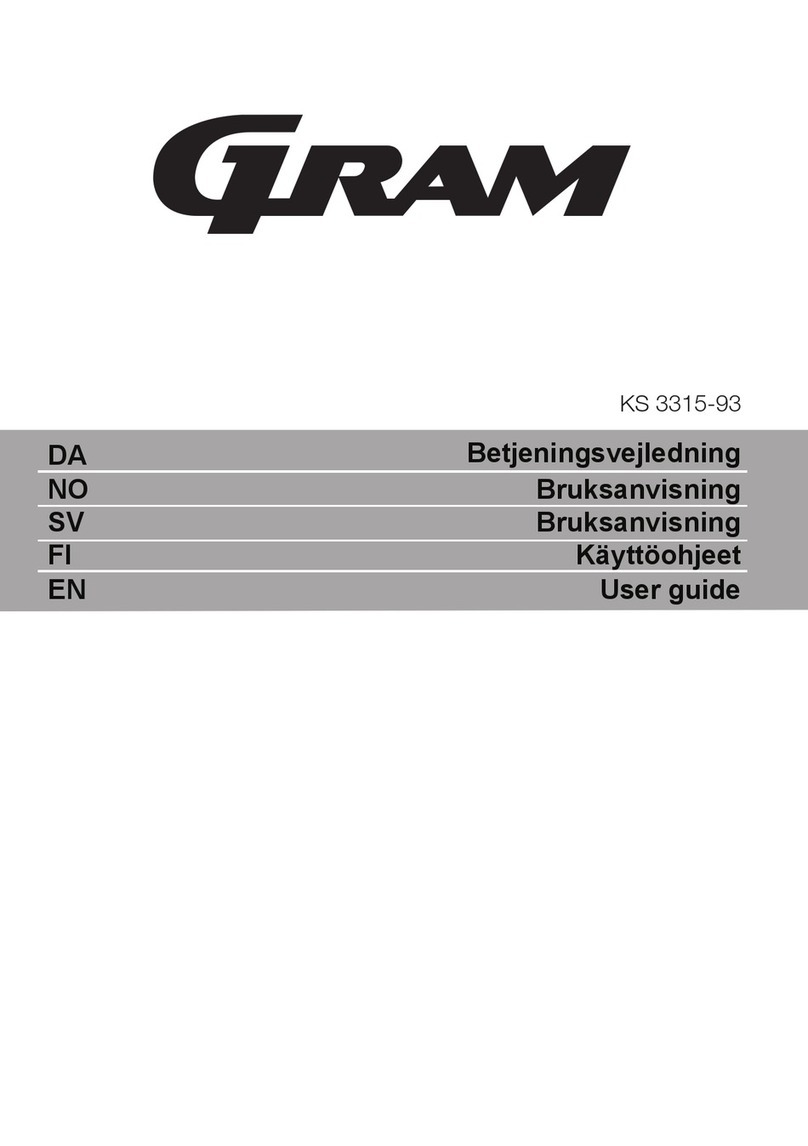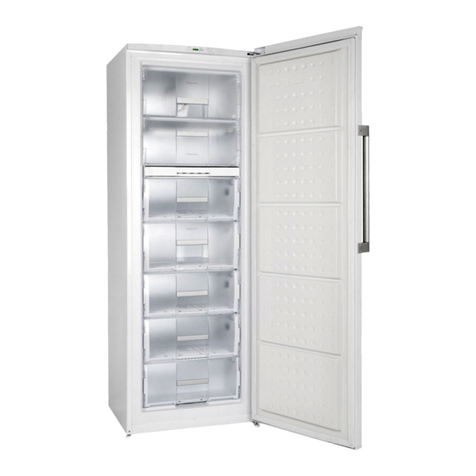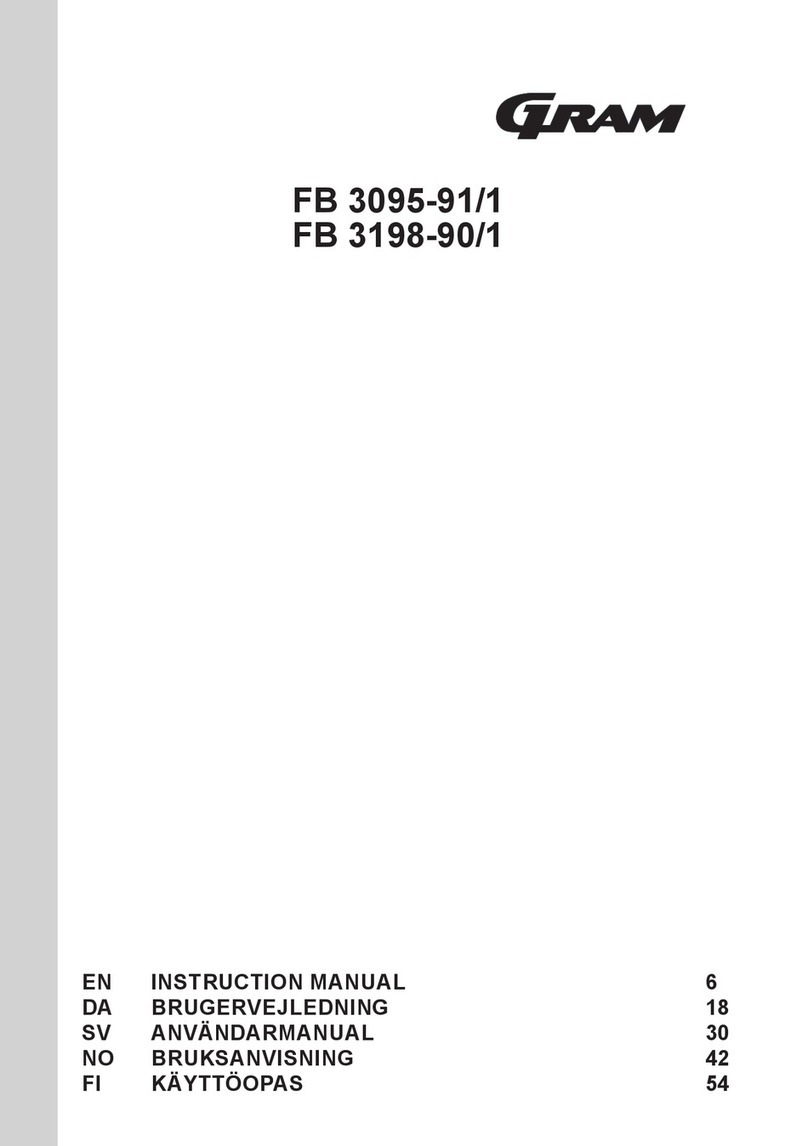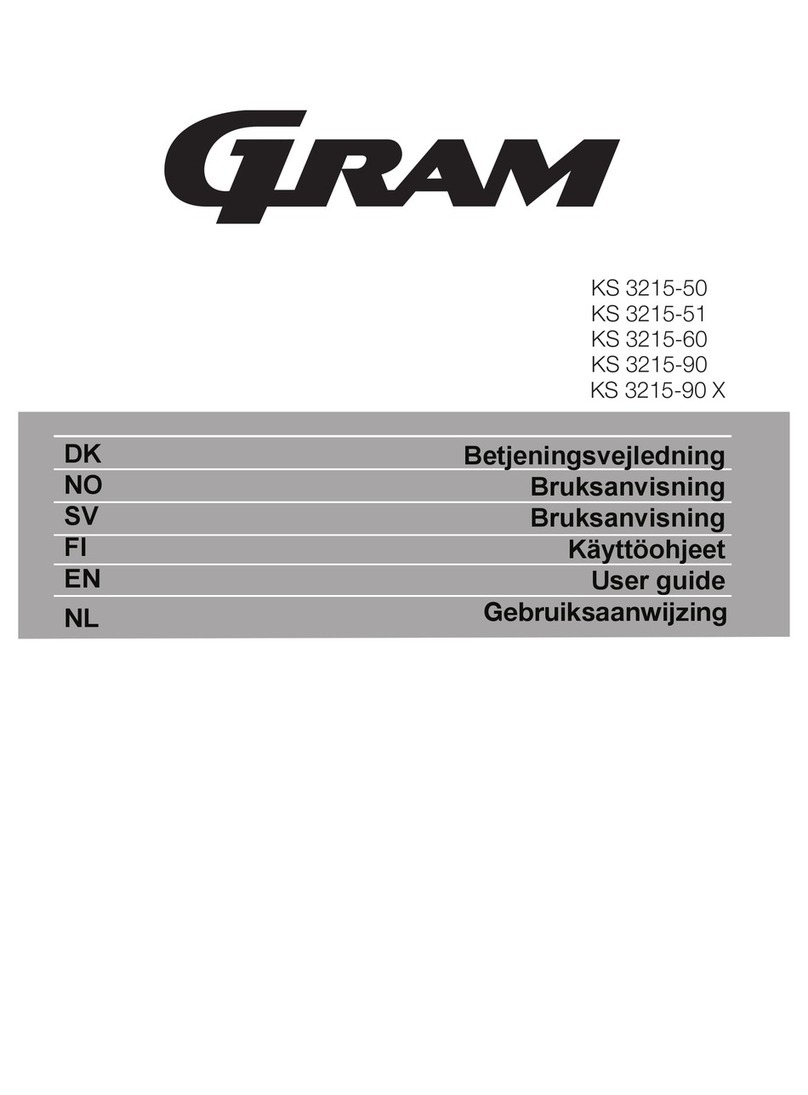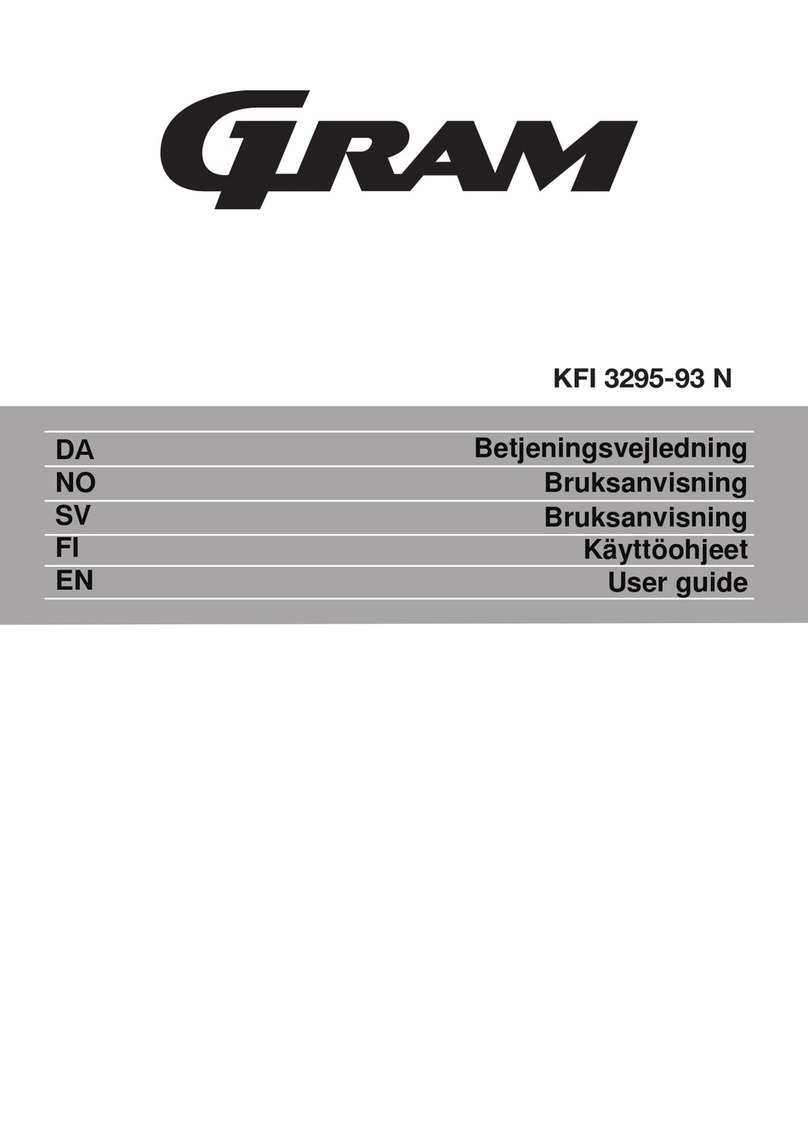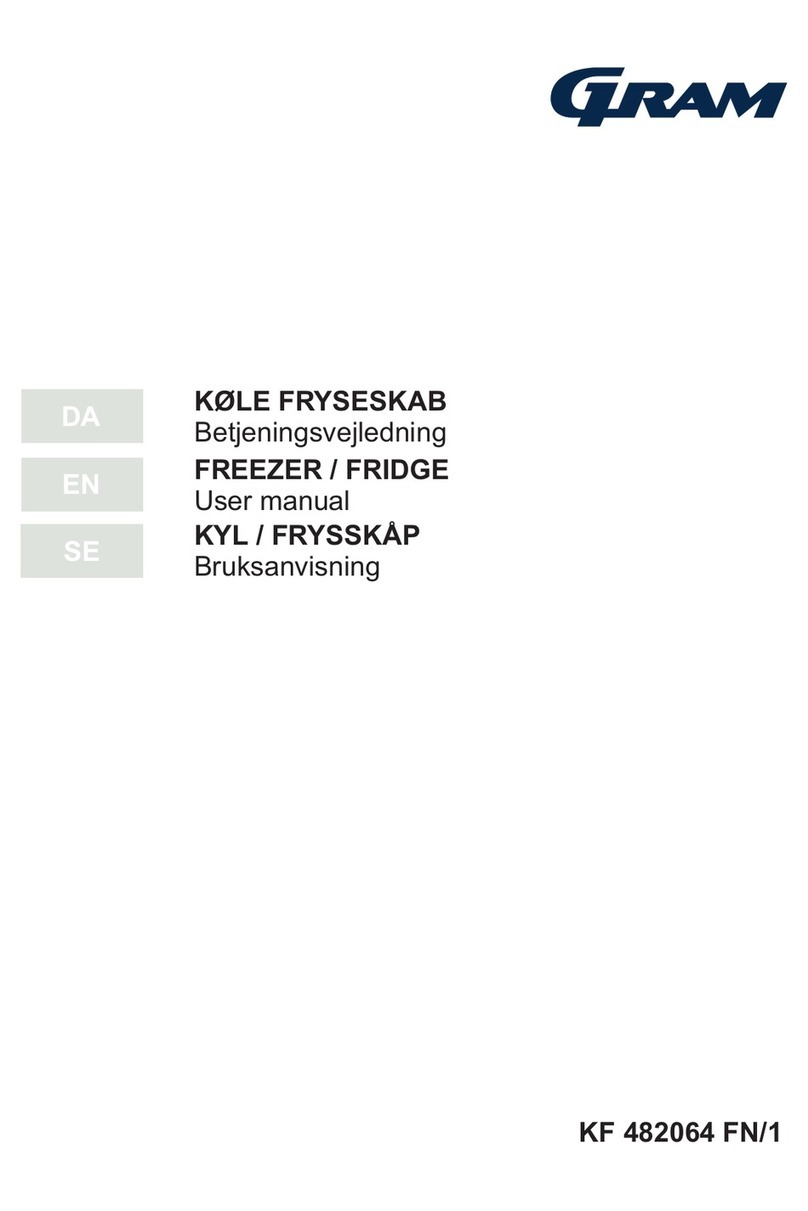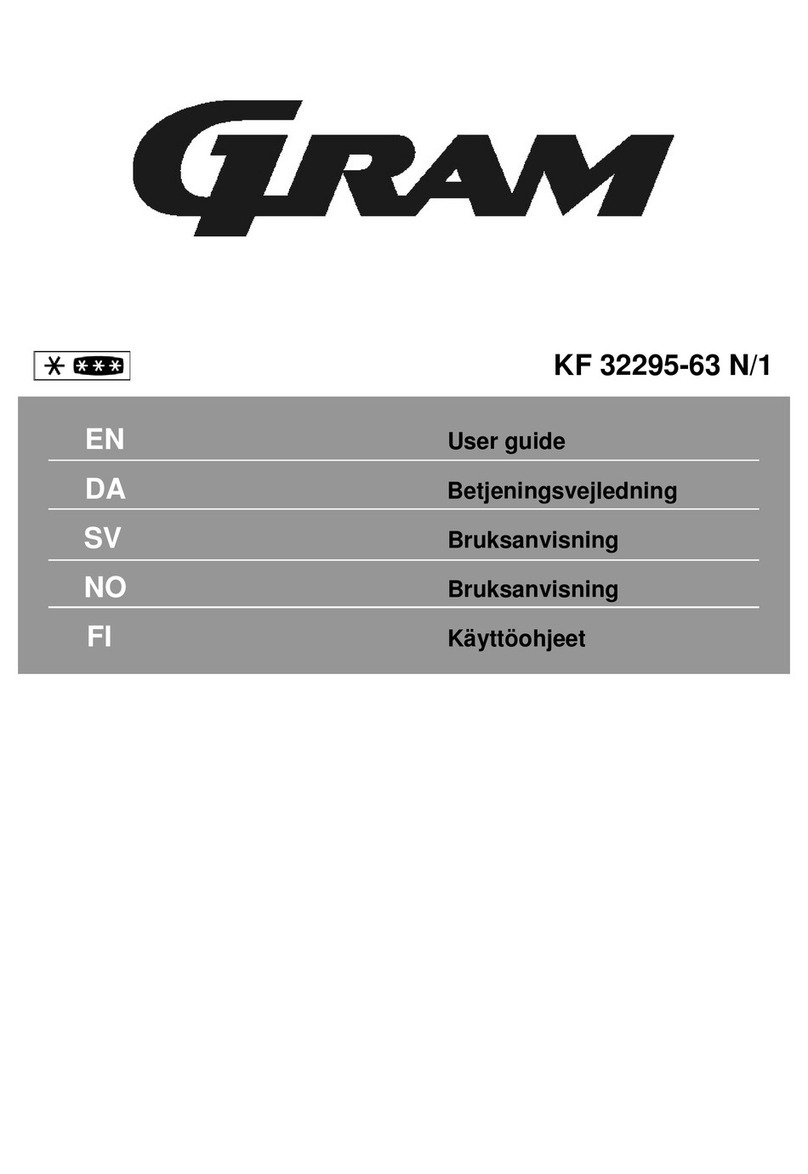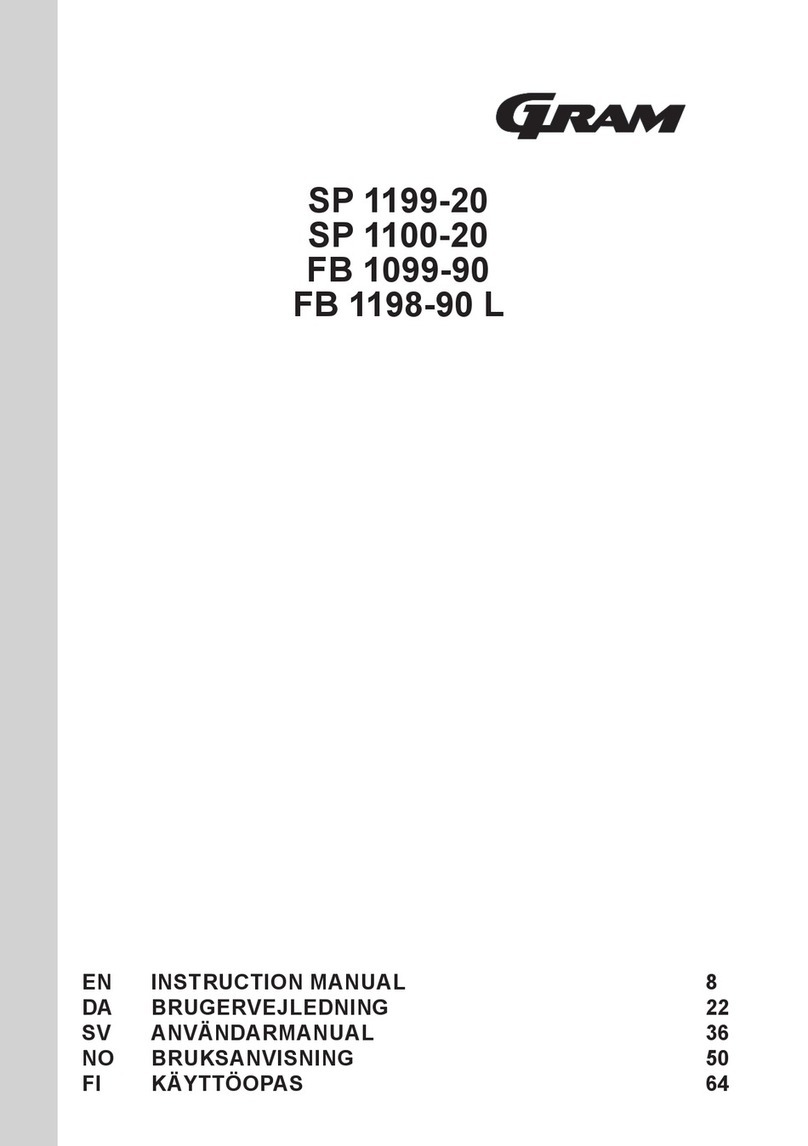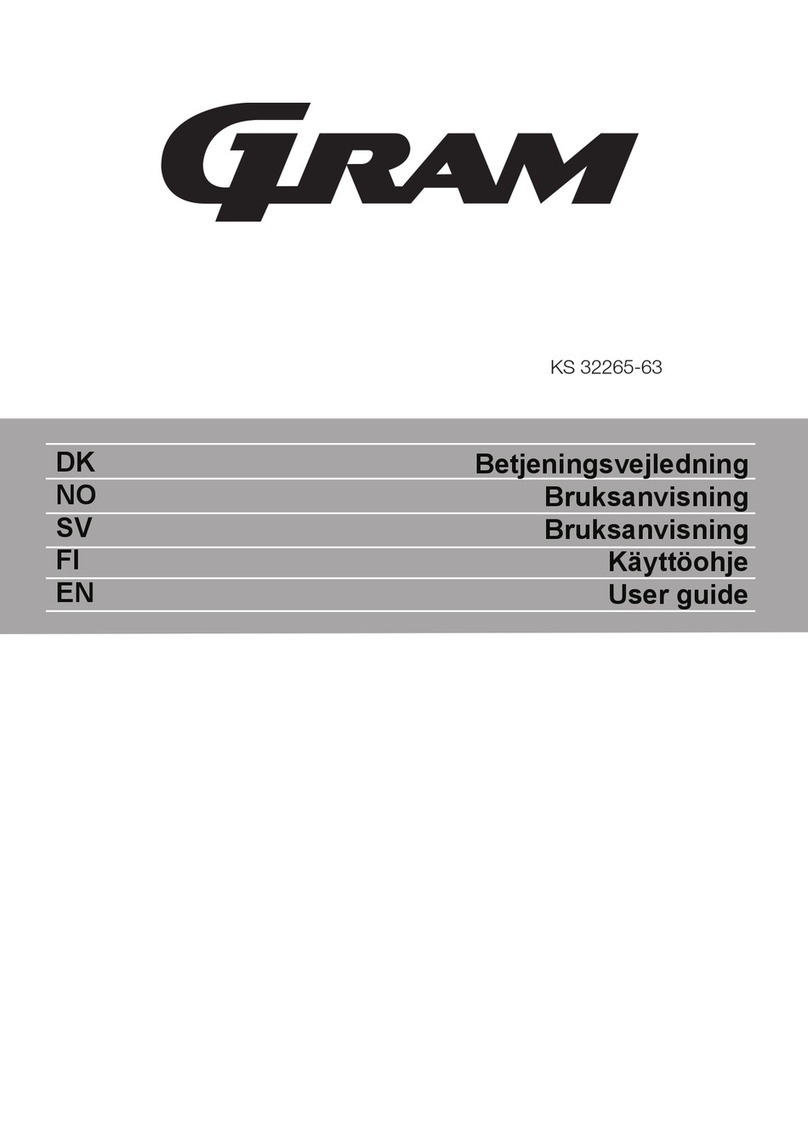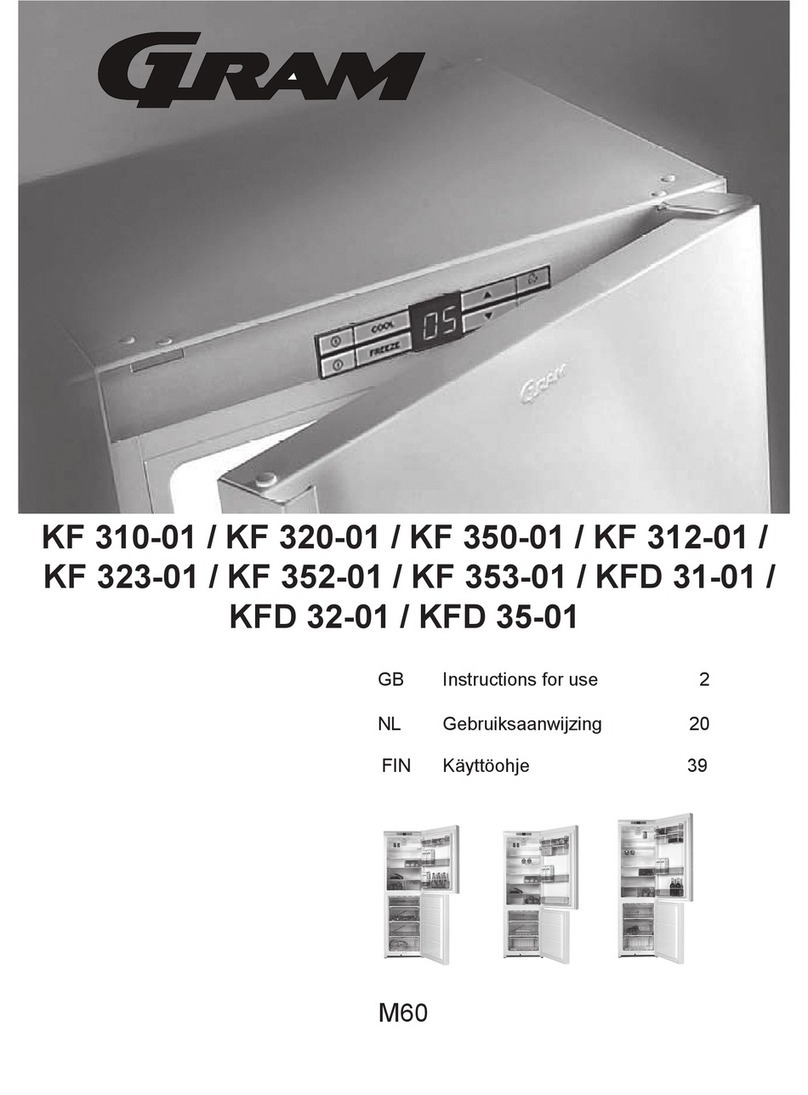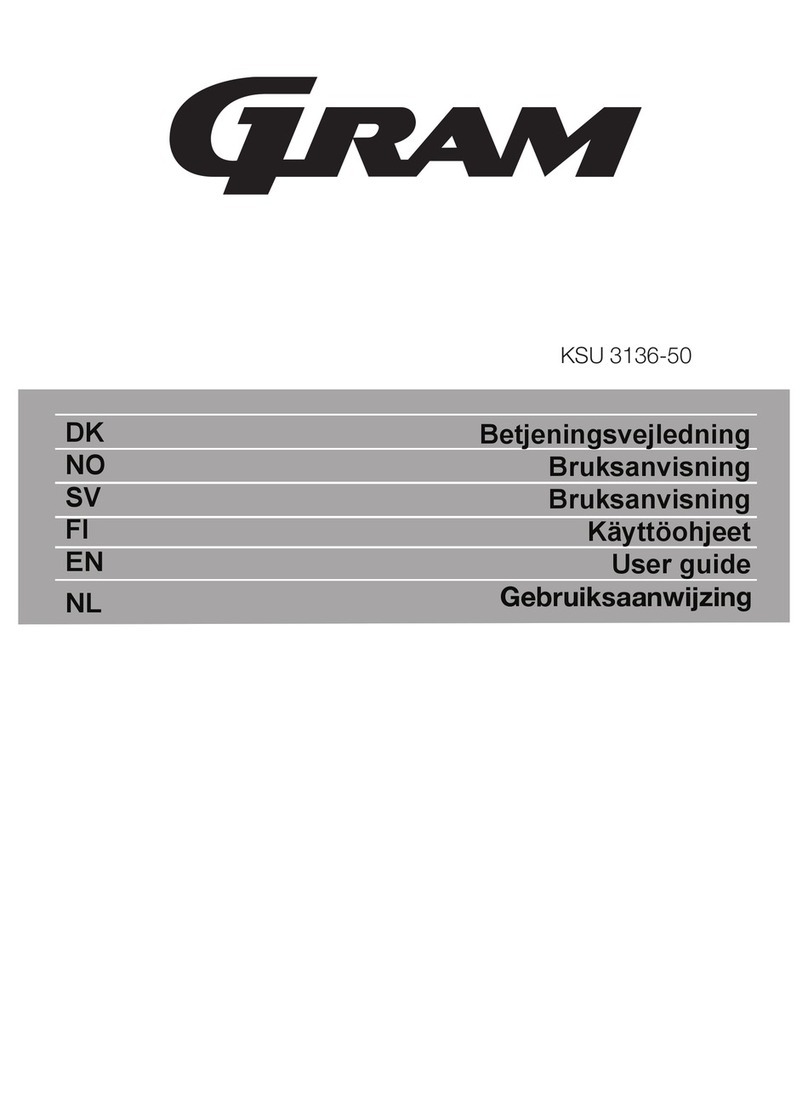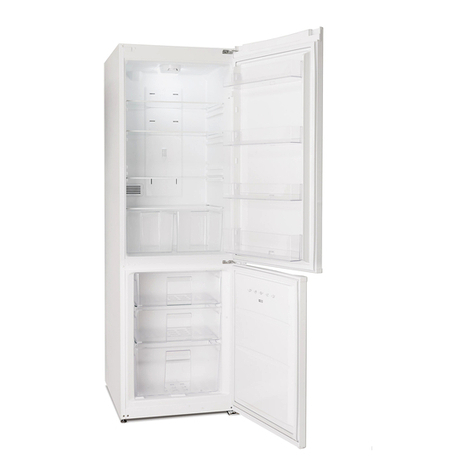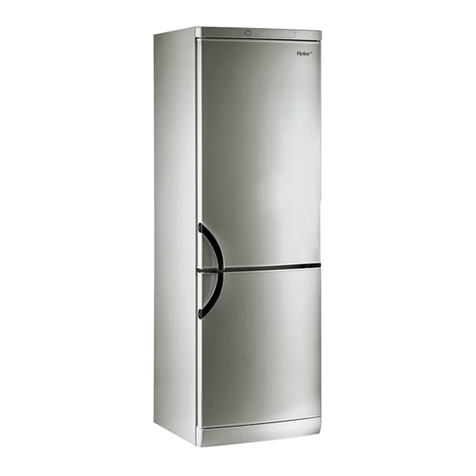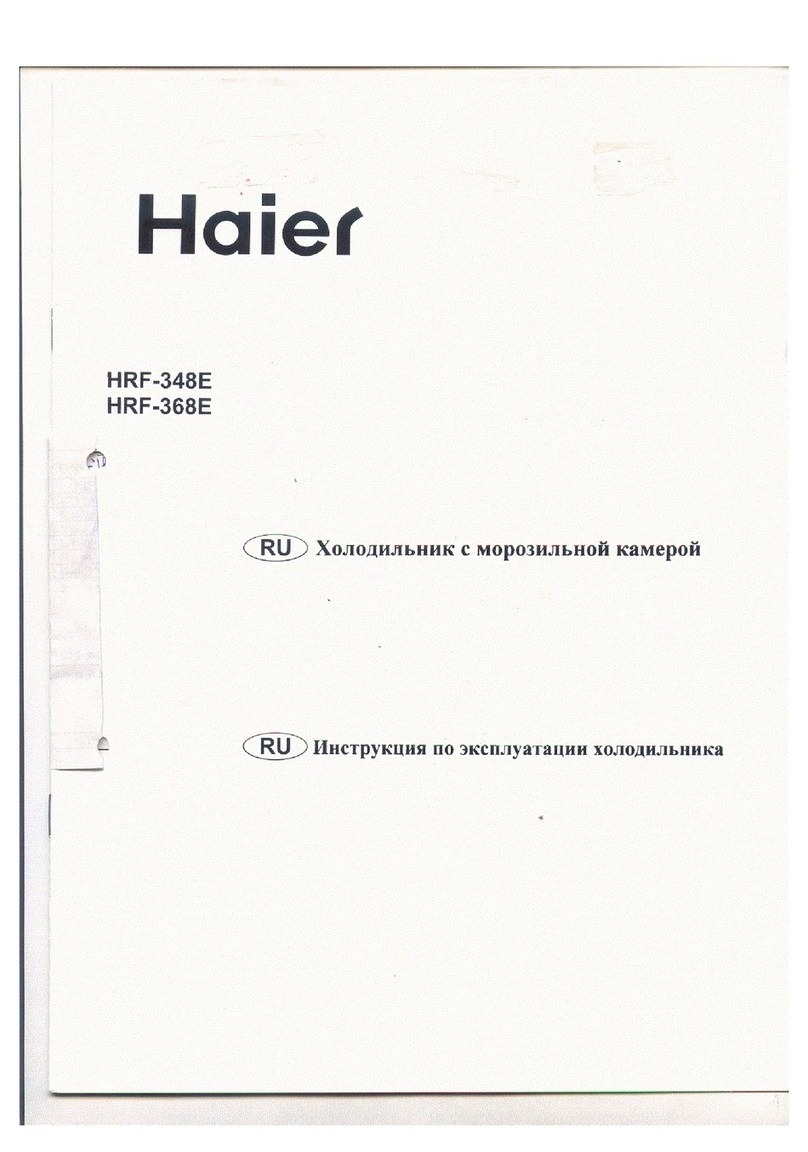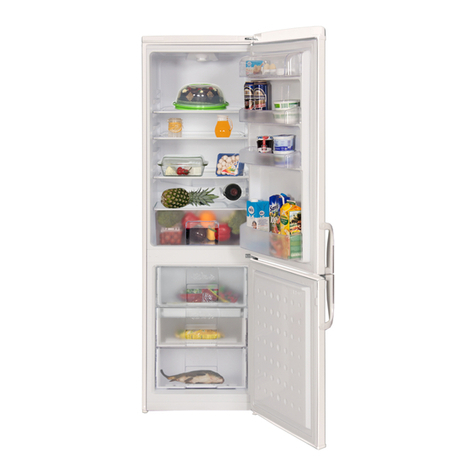8
GB
Switching ON/OFF the refrigerator
Switching ON the refrigerator: press and
hold the pushbutton (1). The operation of
switching on the refrigerator is signalled
by the green light-emitting LED (3), and
the real temperature inside the
refrigerator’s chamber shall be shown on
the display.
Switching OFF the refrigerator: press and
hold the pushbutton (2).
Temperature regulation
The temperature in the refrigerator’s
chamber can be set within the
temperature range from +2oC up to +9oC.
When pressing and holding the COOL
pushbutton (4), the set temperature shall
be shown on the display. When pressing
the pushbutton (6) or pushbutton
(7) it is possible to modify setting of
the temperature inside the refrigerator.
Every pressing of the pushbutton shall
activate a brief acoustic signal. In case of
the power supply failure or disconnecting
the power supply to the refrigerator, the
control will keep in the memory the latest
settings after the power supply has been
restored.
Temperature inside the refrigerator
The temperature settings and
temperature values shown on the display
are average temperatures of the
refrigerator. Do not change the
temperature setting simply because it is
warmer in summer. The increase of the
room temperature will be detected by the
sensor and the compressor will automati-
cally run for a longer time to maintain the
set temperature.
Super refrigerating function
- the first pressing of the
pushbuttons (11) + (4) switches on
the blue light-emitting LED (8) and
activates quick cooling down of the
refrigerator’s chamber to the tem-
perature of approximately 1oC (the
continuous operation of the compres-
sor), after the temperature of 1oC has
been reached the
function automatically disables and
the equipment switches into a normal
cyclic operation restoring the latest
temperature set for the refrigerator.
- during the super refrigerating function
operation, the display shows “Sc”
indication,
- the second pressing of the
pushbuttons (11) + (4), (during
operation of the quick refrigerating
function), disables the function and
switches off the blue light-emitting
LED (8).
It is recommended to switch on the quick
refrigerating function “Sc” before loading
the refrigerator’s chamber with a large
quantity of the fresh food products.
Brief temperature variations
Brief temperature variations are normal
and may occur when for example the fresh
food products are stored in the refrigerator
or when the door is open for a longer time.
These variations will not affect the food
products and the temperature will quickly
return to the set-point level.
The interior light switches on when the
door of the refrigerator’s chamber has
been opened. When the door remains
open, the interior light switches off after
approximately 3 minutes. The display will
show E4 alarm and the acoustic alarm will
be activated.
Function with a ventilator
The ventilator, after being connecting
the choler to the network is inactive. It is
turned on and off by button (10)
Yellow LED light (9) turns on when the
ventilator is turned on.
The ventilator allows to maintain the


